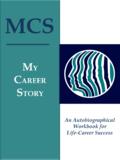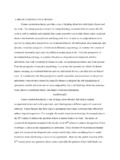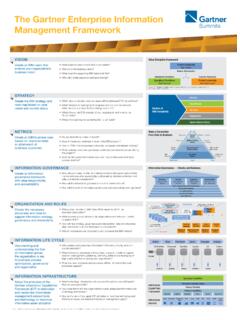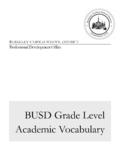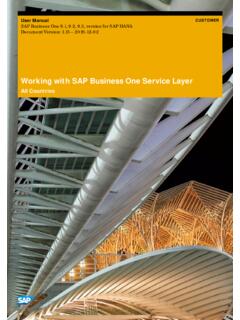Transcription of Life-Design Counseling - Vocopher
1 Life-Design Counseling Manual Mark L. Savickas Table of Contents Life-Design Counseling Manual Copyright 2015 by Mark L. Savickas All rights reserved. No part of this book may be reproduced or transmitted in any form or by any means without written permission from the author. ISBN (13: 978-0-578-16546-2) Chapter 1 Life-Design 5 Chapter 2 The Transition Chapter 3 Career Construction Interview 27 Chapter 4 Reconstructing a life Portrait 37 Chapter 5 Counseling Process .. 67 Postscript .. 81 References .. 83 2 3 Chapter One life design Counseling The life design Counseling Manual presents a principle- driven intervention that counselors may use to assist clients make career transitions.
2 My primary purpose in writing this Manual was to enable graduate students and practitioners to develop the knowledge, skills, and behaviors involved in Life-Design Counseling for Career Construction. Simply stated the Manual encourages Life-Design counselors to become more intentional about what they are doing to prompt client transformation and why they are doing it. My second goal was to aid researchers to improve coherence with Life-Design discourse when they conduct treatment studies. Before proceeding, I need to explain the term Life-Design Counseling for career construction. I distinguish the career construction theory of vocational behavior (Savickas, 2002, 2013) in applied psychology from life designing (Savickas, 2011) as a discourse in the Counseling profession.
3 I use the term life design to denote the third major paradigm for career intervention, subsequent to vocational guidance and career education (Savickas, 2015a). The three paradigms move from scores to stages to stories. The intervention described in this Manual applies career construction theory to Life-Design Counseling discourse. To denote the intervention, I use the precise phrase Life-Design Counseling for career construction. For brevity, I also refer to it as life - design Counseling or life designing. Other writers have occasionally referred to it as career construction Counseling . Of course, life designing is much broader than building a 4 career.
4 Accordingly, several colleagues and I are currently elaborating Life-Design Counseling discourse to include interpersonal and intimate relationships. This Manual presents a protocol for Life-Design Counseling that enables counselors to enter the consulting room with a framework for addressing a client s career concerns. The Manual describes phases of treatment, session-by-session principles, and an outline of procedures. Each component includes clearly defined yet flexible steps for common, everyday practice. The Counseling techniques and strategies are concrete, specific, and illustrated with client examples. Although structured and systematic, the flexible guidelines allow counselors to appropriately address their clients situations and values.
5 Rather than mechanistically apply the guidelines, counselors reflectively use them to the extent that they correspond to a client s reality and needs. Determining how to adapt the intervention to fit a particular client is the creative part. Counselors must assess what is useful to clients by thinking about its impact in moving clients toward their goals. Life-Design Counseling itself is improvisation within a map of action. As a metaphor, I liken life designing to jazz. One cannot play jazz without the notes, yet jazz musicians do not play the notes. Instead, they use the notes creatively and sometimes play between the notes. Responsive counselors who know Life-Design discourse and career construction theory may confidently improvise to meet the needs of a specific client.
6 In the words of Picasso, Learn the rules like a professional, so you can break them like an artist. Where do the notes for life designing come from? The guiding principles and intervention protocol are informed in general by research about Counseling . They are informed in particular by practice-based evidence that includes client 6 feedback, clinical observations, and published case studies. This Manual does not imply that treatment is based on research evidence or proven outcomes. Rather, it details the best practice of Life-Design Counseling for career construction drawn from case studies and derived from the collective experience of its practitioners.
7 Accordingly, life - design Counseling is not intended as a model or theory. Rather, it is a discourse in which concepts are used to enhance understanding about how practitioners might proceed. It is a discursive device to systematize practice- based knowledge, not guide scientific measurement, experimentation, or prediction. In referring to Counseling , I prefer to use the term discourse rather than the essentialist terms of theory or model. This means that Counseling produces the disciplinary discourse, rather than Counseling being a product of the discourse (Davies & Harre, 1990). Practice leads theory, not the other way around.
8 As the social organization of work evolves and career trajectories change , counselors must respond to client needs before theory has time to address them. Accordingly, Life-Design discourse follows and formalizes effective new career Counseling practices. Career Counseling itself has evolved over time into a multifaceted discipline with a myriad of discourses that structure distinct interventions and services including vocational guidance, academic advising, career education, job placement, career development, career coaching, vocational rehabilitation, career constructing, and life designing (Savickas, 2015a).
9 Guidance Compared to Counseling For the purposes herein, I wish merely to differentiate between the practice of vocational guidance based on scores and Life-Design Counseling based on stories. Vocational guidance rests on logical positivism. This discourse positions counselors as subjects and clients as objects. 7 OUTER EDGE OUTER EDGE OUTER EDGE Vocational guidance measures clients objective resemblance to prototypes and occupational groups in terms of essentialist categories such as abilities, interests, and personality traits. Life-Design Counseling as a disciplinary discourse prefers a double hermeneutic (Rennie, 2012) in that it positions both client and counselor as subjects.
10 Rather than test scores that indicate who clients resemble, life designing uses stories that show clients uniqueness. To give a different account of clients, life designing assesses constructionist categories such as intention, purpose, and calling (Madigan, 2011). In short, guiding concentrates on scores whereas designing concentrates on stories. To learn more about the difference between guidance and life designing see Savickas (2012, 2015a). Herein it is sufficient to state that both vocational guidance and life designing are important interventions yet they differ markedly.
